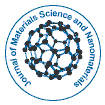开放获取期刊获得更多读者和引用
700 种期刊 和 15,000,000 名读者 每份期刊 获得 25,000 多名读者
抽象的
Computing Thermo-Elasticity of Crystalline Systems from Quasi-Static and Quasi-Harmonic Approximations
Maurizio Destefanis
An effective algorithm for the calculation of the thermo-elasticity of solid compounds is discussed and implemented into the CRYSTAL program, a quantum-mechanical ab-initio simulation software (www. crystal.unito.it). The computational approach to the characterization of advanced properties of materials is becoming a powerful complementary tool to actual experiments in the laboratory because of its increasing accuracy and efficiency. The term thermo-elasticity means the thermal dependence of the elastic response of the system. More precisely, speaking about crystalline materials, we should talk about anisotropic thermo-elasticity. This explicitly refers to the ability of characterizing the directional elastic properties and not just their average values - that would be sufficient for isotropic media, such as fluids or amorphous solids.

 English
English  Spanish
Spanish  Russian
Russian  German
German  French
French  Japanese
Japanese  Portuguese
Portuguese  Hindi
Hindi